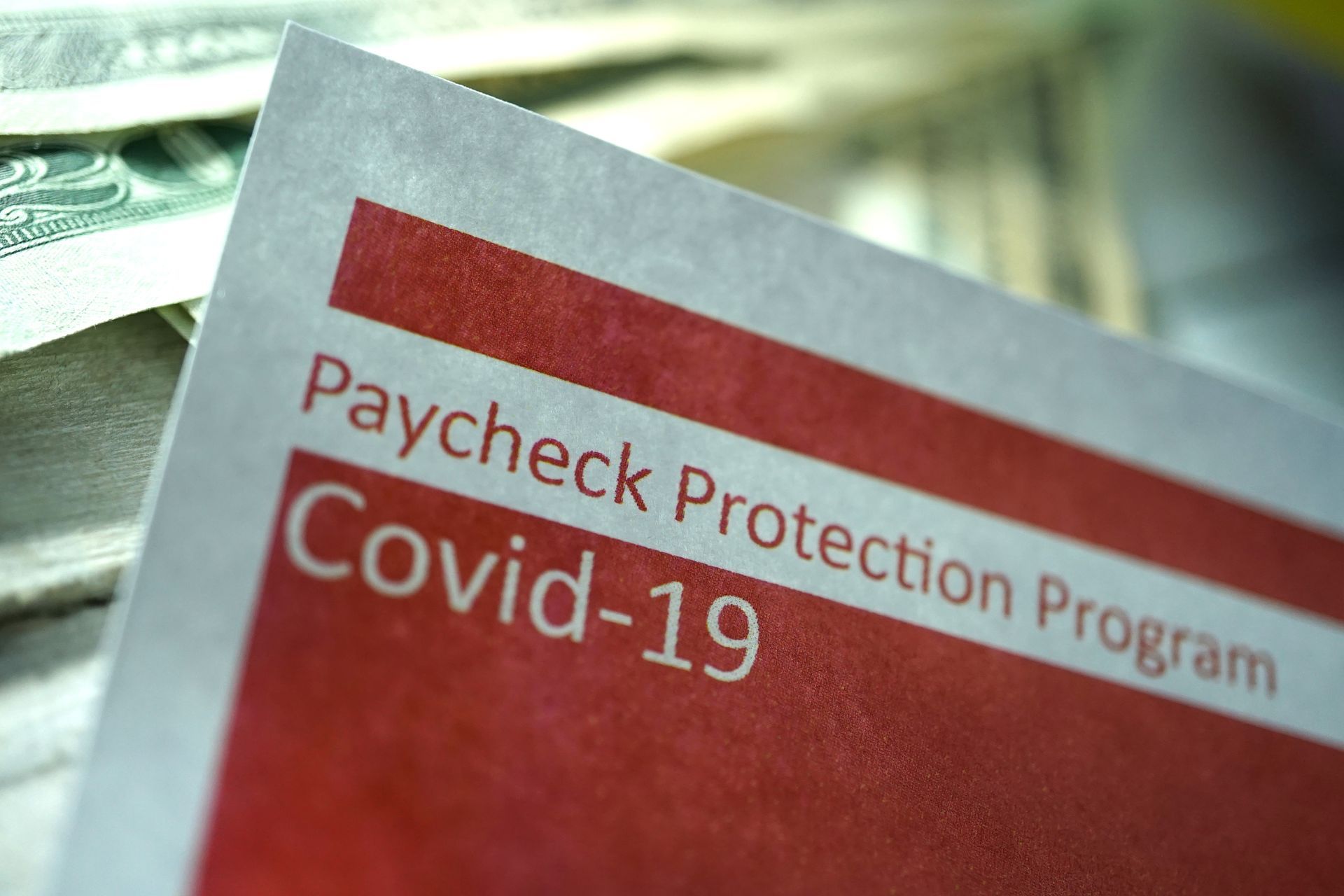The ERC: A Refundable Payroll Tax Credit
It’s been almost three years since the COVID-19 outbreak hit the shores of the United States. In response to the pandemic and its effect on the country’s residents and businesses, U.S. lawmakers enacted multiple pieces of legislation, including The Coronavirus Aid, Relief and Economic Security (CARES) Act, the Families First Coronavirus Response Act (FFCRA), the Consolidated Appropriations Act (CAA), the Paycheck Protection Program (PPP), the American Rescue Plan and the Coronavirus Preparedness and Response Supplemental Appropriations Act (CPRSA).
The Employee Retention Tax Credit was introduced through the CARES Act to encourage eligible employers to keep their employees on the payroll during the COVID-19 outbreak. It’s a fully refundable tax credit that businesses can claim on qualified wages paid to employees, including some health insurance costs.
What is the Employee Retention Credit?
Under the CARES Act of 2020, businesses may be eligible for the ERC if they had employees and operated a trade or business. Most tax-exempt organizations are included. However, with limited exceptions, it does not apply to governments or their agencies and instrumentalities. A small eligible employer for 2020 is an employer that had 100 or fewer full-time (30 hours per week or more) employees on average per month in 2019, and for 2021 had 500 or fewer full-time employees on average per month in 2019.
Your business may be eligible for the ERC if its operations were fully or partially suspended by governmental COVID-19 orders limiting commerce, travel or group meetings. Or, if it had a significant decline in gross receipts during 2020 (50% or more compared to 2019) or the first three quarters of 2021 (20% or more compared to 2019). If your business started to operate on or after February 15, 2020, it may qualify to claim the ERC for the third or fourth quarter of 2021 as a recovery startup business.
Eligible businesses can retroactively claim the ERC credit for 2020 and 2021. How? By filing Internal Revenue Service (IRS) Form 941X to amend their filed returns (Form 941) for the quarters during which your business was an eligible employer. It is important to ensure that Form 941 for 2020 and 2021 was filed, received and processed by the IRS prior to filing Form 941X. Unlike Form 941, Form 941X cannot be filed electronically.

What is a Refundable Tax Credit?
Utilized to generate a federal tax refund larger than the amount of tax paid throughout the year, a refundable tax credit creates the possibility of negative federal tax liability. Basically, it not only lowers the amount of tax you owe but may even pay you above and beyond that.
Is Employee Retention Credit Taxable?
The ERC refund must be reported on the employer’s annual federal corporate income tax return. The ERC refund is subject to expense disallowance rules. This means that you’re not allowed to receive a wage deduction and a credit for the same wage expense. If you file for ERC, you must reduce deductible wage expenses by the amount of funding you get back from the IRS. Since most employers have already filed their annual income tax returns for 2020 and 2021, they must amend those returns after they claim the ERC.
Many states follow this federal approach. However, it’s important to note that the state and local income tax implications of the employee retention credit are very complicated. This is because of state tax law conformity to the Internal Revenue Code (IRC).

How is the Erc Applied Against Payroll Taxes?
The employee retention tax credit is a refundable and non-refundable quarterly tax credit. The non-refundable credit allows the government to refund the employer’s share of employment taxes (FICA and Medicare). The refundable credit is a payment from the government beyond the amount of employment taxes paid by the employer during 2020 and 2021. The credits were designed to incentivize employers to retain employees during COVID-19.
Other Considerations for the Employee Retention Credit
Initially, businesses that received PPP loans weren’t eligible for an employee retention credit. However, through the Consolidated Appropriations Act of 2021, eligible businesses that received a PPP loan can now apply for the ERC — retroactively to 2020. Note that you cannot claim the ERC for qualifying employee wages paid with funds from a forgiven PPP loan.

Although claiming the ERC is beneficial for most businesses, it also has the potential to affect their 2020 and 2021 financial statements. A company’s ERC should be recorded as a credit to grant income and a debit to accounts receivable (A/R). Businesses that received their employee retention credit as an advance payment should credit the refundable advance liability and debit the cash.
Whichever method you select for accounting for your employee retention income tax credit, make sure to include disclosures in your financial statements about the accounting method/standard you chose. This will help ensure your compliance with IRS rules and regulations.
If you’ve yet to apply for the ERC, there’s good news: you still have time. Although the employee retention credit program has already ended, an eligible employer still has time to claim it by filing a Form 941X for relevant quarters. For all four quarters in 2020, the deadline to apply is April 15, 2024; for all quarters in 2021, the deadline is April 15, 2025.
Conclusion
There’s a lot of information to comprehend about this valuable tax credit. Some companies are unsure about what constitutes wages paid, while others simply don’t know how such a payroll tax credit affects their income tax return.
At Stenson Tamaddon, we’ve assisted businesses of all sizes in filing for the employee retention credit and similar employer tax credits. We have experience collaborating with business owners to ensure they receive maximum credit for each calendar year. Partnering with us can save you both time and effort when filing your ERC, so contact us today to connect with one of our tax credit experts.
FAQ
How Long Does It Take to Receive an Employee Retention Credit Refund?
This refund process varies. Typically, though, it takes the IRS between 4 and 12 months to issue ERC refunds. Generally, smaller refunds (under $80K per qualifying quarter) process faster than larger refunds (over $80K per quarter).
What Constitutes Qualifying Businesses Under the ERC?
Under the CARES Act of 2020, businesses may be eligible for the ERC if they had employees and operated a trade or business. This includes tax-exempt organizations. However, with limited exceptions, it does not apply to governments or their agencies and instrumentalities. A small eligible employer for 2020 is an employer that had 100 or fewer full-time (30 hours per week or more) employees on average per month in 2019, and for 2021 had 500 or fewer full-time employees on average per month in 2019.
Your business may be eligible for the ERC if its operations were fully or partially suspended by governmental COVID-19 orders limiting commerce, travel or group meetings. Or, if you experienced significant declines in gross receipts during 2020 (50% or more versus 2019) or the first three quarters of 2021 (20% or more versus 2019). If your business started to operate on or after February 15, 2020, it may qualify to claim the ERC for the third or fourth quarters of 2021 as a recovery startup business.
What Wages Qualify for the Employee Retention Credit?
Qualifying wages under the ERC generally include those paid by employers to employees while operations were fully or partially suspended by governmental COVID-19 orders, or the business experienced a decline in gross receipts. What’s covered? Cash wages, both hourly and salaried, along with vacation pay and any other taxable wages. Qualifying wages under the ERC program also include certain health plan expenses that are allocable to those wages.
Under the ERC program, qualified wages are limited to the first $10,000 of compensation paid to any employee during a calendar year (2020) or calendar quarter (2021) and can be claimed for wages paid or incurred from March 13, 2020 through September 30, 2021.
This is a year-by-year breakdown of what the employee retention credit offers to eligible employers:
- 2020 ERC: A credit against certain payroll taxes of 50% of the wages paid — up to $10k per employee — from March 12 – December 31, 2020 (capped at $5k per employee).
- 2021 ERC: A quarterly tax credit of 70% of the first $10,000 in wages per employee in each quarter of 2021 from January to September 2021 (capped at $7K per employee per quarter).
Does the ERC Include Medicare Taxes Paid?
Yes. The employee retention credit applies to employment taxes such as withholding, FICA and Medicare.
Can Recovery Startup Businesses Claim the ERC?
Yes. Recovery startup businesses can claim the ERC for qualified wages paid after June 30, 2021, and before January 1, 2022. According to the American Rescue Plan Act, this type of business is eligible for the ERC if it started on or after February 15, 2020, has one or more W2 employees (not including owner-operators or family members) and has annual gross income/receipts that do not exceed $1 million for the individual 2020 and 2021 tax years.
The post The ERC: A Refundable Payroll Tax Credit first appeared on Stentam.
The post The ERC: A Refundable Payroll Tax Credit appeared first on Stentam.




Lead Types
ERC Exclusive Leads
ERC Inbound Calls
ERC Small Business Data
Our Company
Let’s Connect
Youtube
Contact Us
GetErcLeads.com is Powered By GROW with MKG


